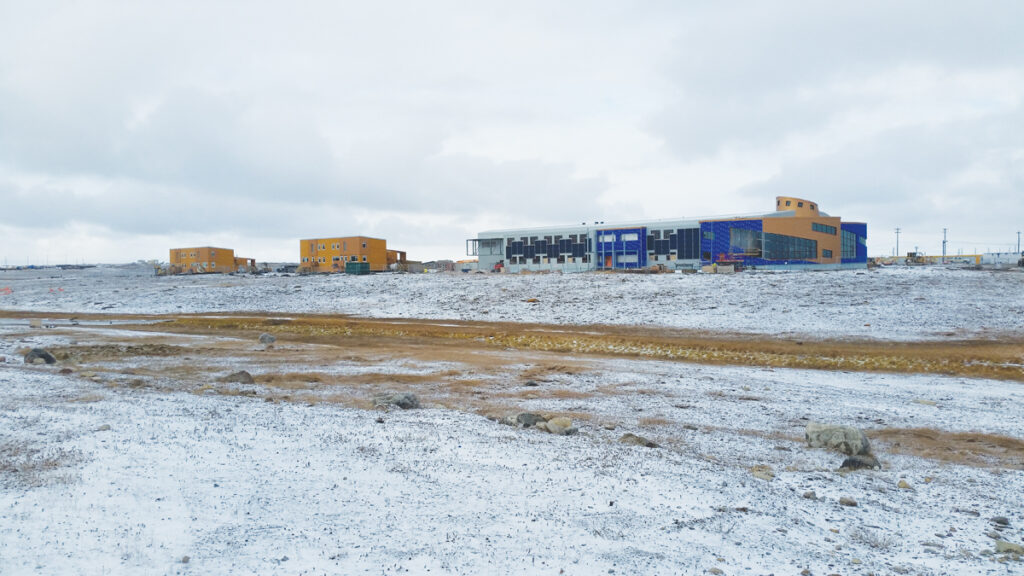Nunavut Gets a Research Campus

Construction of an innovative research center underway in Cambridge Bay, NU, is set to be complete in 2017, just in time for Canada’s 150th anniversary celebrations. The Canadian High Arctic Research Station (CHARS) will be the headquarters of Polar Knowledge Canada, the federal agency that oversees Arctic research.
Operating year-round, CHARS will complement a network of other research facilities across the North but be by far the largest such complex. In a campus-style arrangement, the site’s anchor building is the main research building. At 50,000 sq. ft., it will be one of the biggest buildings in Canada’s Northern territories. It will feature research labs, centers for technology development and knowledge sharing, and rooms for teaching, training and community engagement.
Other intended facilities on the CHARS campus will be a field and maintenance building, and two triplex accommodation buildings for visiting researchers and scientists. About 40 full-time, Cambridge Bay-based scientists and support staff are expected to be employed when the research center is up and running.
Indigenous and Northern Affairs Canada is the federal department responsible for financing and oversight of the architectural design, construction, equipping and furnishing the station. The most recent estimated cost for CHARS is $204 million. An additional $46 million will be spent on the Science and Technology program’s implementation.
After posting the construction manager contract bid on its electronic tendering service, INAC awarded the job to EllisDon Corporation in a joint venture with NCC Dowland Construction Ltd.
The design consultant contract went to Montreal-based Fournier Gersovitz Moss Drolet et associés and NFOE et associés architects, also operating as a joint venture. Both design firms have a history of working in the Arctic as well work on science and research facilities.
INAC estimates that an average of 60 workers a day are active at the construction site. Construction of the station is expected to generate up to 150 jobs across the North and in other parts of Canada.
The design for CHARS was completed in 2011 and construction began in 2014. Work projects are programmed in small enough packages so that contracts are accessible to local Nunavut companies and trades thereby creating many economic benefits to the Cambridge Bay community. Also, as part of the Inuit Benefits Plan, local job and skills development are encouraged for beneficiaries of the Nunavut Land Claims Agreement.
According to INAC, as of February, 2016, over $52 million of the construction budget has already contributed to the IBP through contracting, employment, and training.
The research campus will be built to a gold certification in Leadership in Energy and Environmental Design (LEED), despite the difficulties of achieving this designation in a Northern environment. Some of the initiatives undertaken to meet the LEED gold include applying the Labs21 Environmental Performance Criteria (a program with the goal of more sustainable, high-performance, and low-energy laboratories). Other features at the station will include those such as bike racks, low-flow fixtures, ongoing monitoring of building systems, wastewater and waste management, managing light pollution, energy reduction, and maintaining high level of air quality.

